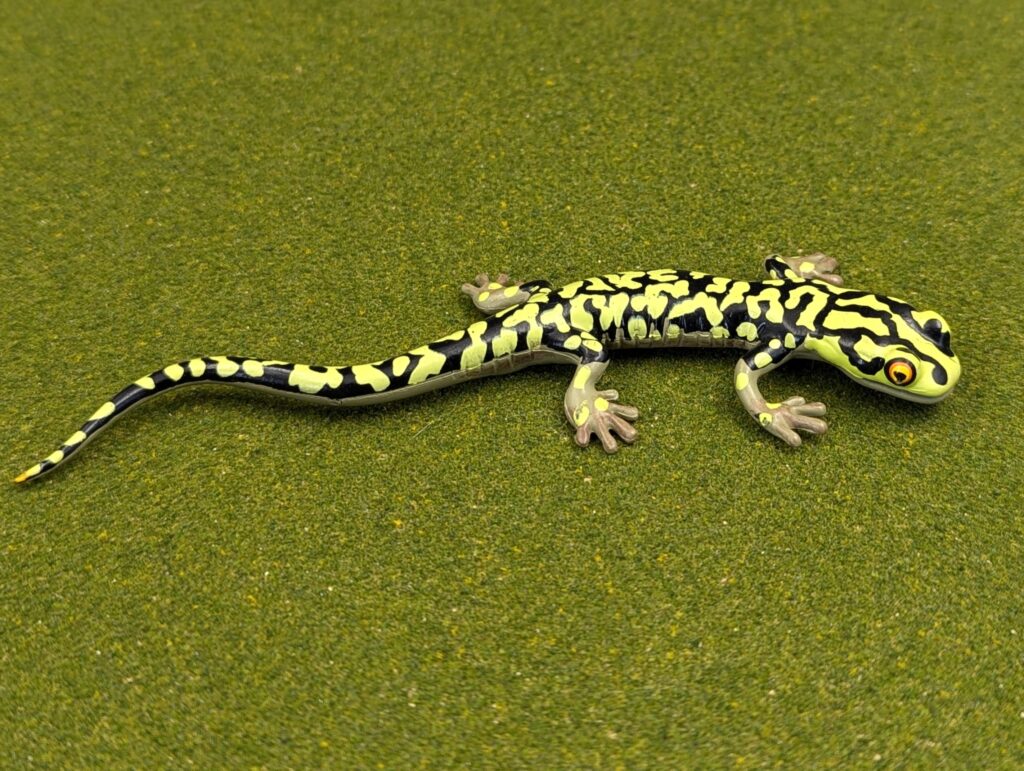
Now for a review of another of the Tennessee Aquarium salamander models from Safari, this time the green salamander Aneides aeneus, product number 210172 in the line. Green salamanders are notable for a few features, not least of which is their distinctive green colour; this species is the only salamander in North America with green colouration. Or, perhaps, I should say it represents the complex of the only green-coloured salamanders in North America. When the figure was produced, the green salamander was assumed to be one single widespread species, however, there is now at least one other related species A. caryaensis, and potentially others (placed in the subgenus Castaneides). Throughout, though, all members of this group have similar green colouration, and are the only members of the genus east of the Mississippi.
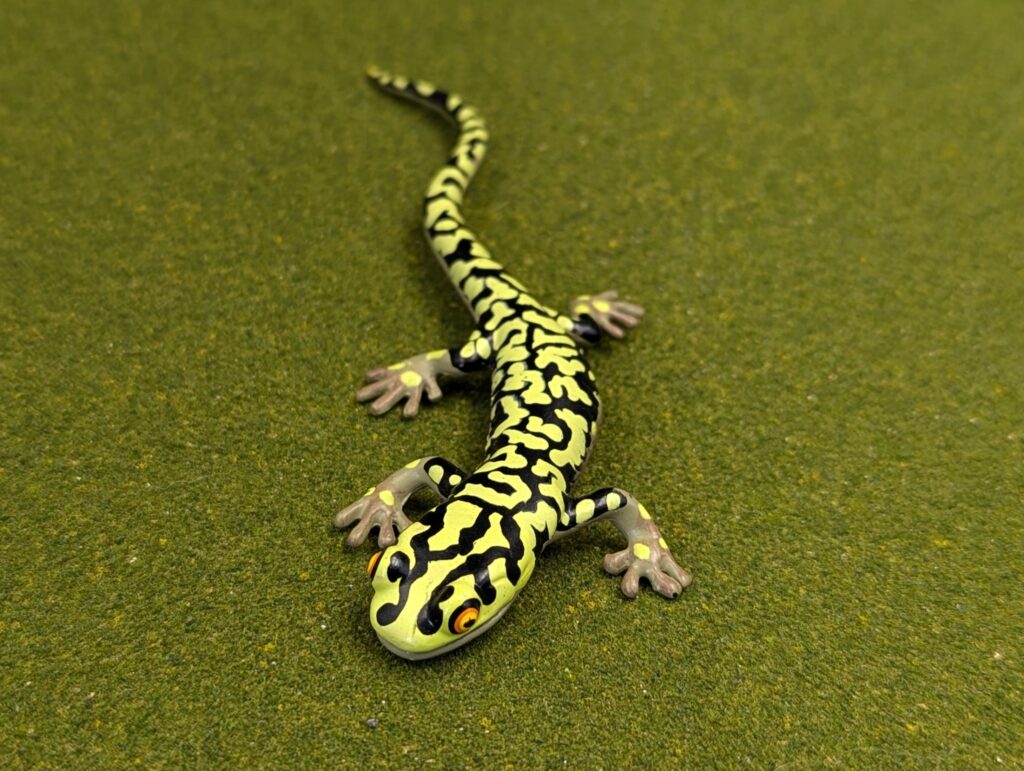
The green salamander, like other Aneides species, is found in mountainous areas, in it’s case the Appalachian mountain ranges in areas of the southeast USA, although this range may actually represent distinct related species. Green salamanders have a very particular environmental niche from which they rarely stray, and which also apparently makes them fairly uncommon to come across in the wild. Their preference is crevices on the sides of rocky outcrops or cliffs, shielded from light either by the crevices or surrounding plants. They may also be found in trees but this is usually still close to their preferred rocky spaces, or under bark at certain times of the year. Green salamanders, like all Aneides salamanders, are excellent climbers (the genus is often referred to as ‘climbing salamanders’), with prehensile tails and squared toes as arboreal adaptations.

Green salamanders, as the name suggests, are notably green in colour, in a blotchy pattern that kind of mimics lichens or mosses in their habitat. The body is also generally quite flat–the better to squeeze into crevices. They are fiercely territorial, unusually so for salamanders, with males attacking other salamanders or potential predators, and brooding females quickly attacking anything that approaches. In terms of size, they range between 8 and 12 cm (3 to 5 inches) in length. They are lungless salamanders (members of the family Plethodontidae), meaning that adults have no lungs for respiration, instead relying on damp surroundings to allow their skin to absorb oxygen. Of course, this can make them vulnerable to issues such as climate change and disease, and their population status varies depending on what state they are found in. Habitat alteration appears to have had less affect (again, due to their very specific, difficult-to-access rocky locales) but overcollection has had more impact; studies vary, but it appears green salamanders may become reproductively mature by 3 to eight years, so impacts on the breeding population could recover very slowly. As a species they are listed as Near Threatened by the IUCN.
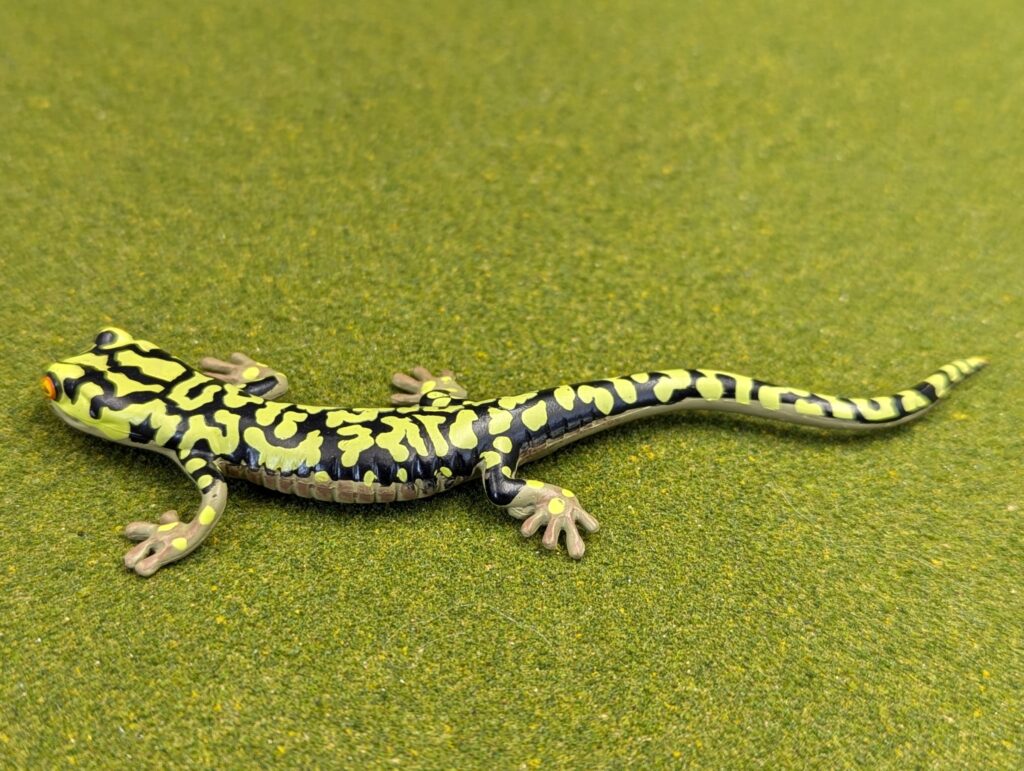
The figure produced by Safari is of course amazing (it’s going to be hard to find other ways to say it for the series…they’re all great). The first thing that stands out is of course the colour, which perfectly captures the green salamander patterns. The back is an assortment of blotches of a lightish green, over a black background, and really does have the appearance of blotchy lichens. As would be expected, the eyes are large, prominently placed on the top of the head, painted in narrow bands of bright orange then dull orange, with a black pupil; the eye should be more of a mottled metallic copper. The legs have the same green blotches but are grey otherwise; this matches the ventrum of the figure. In the real animal the belly ranges from yellow to black, so this might be okay. The sides are sculpted with distinct costal folds (a necessity to increase surface area for respiration). It’s difficult to count due to the bend in the figure, but on the side that’s easier to count, there appear to be 14, which I believe is correct for the species. There is also a sculpted cloacal slit at the base of the tail…it’s fairly long so this could indicate a male, but nothing else on the figure is characteristic either way.
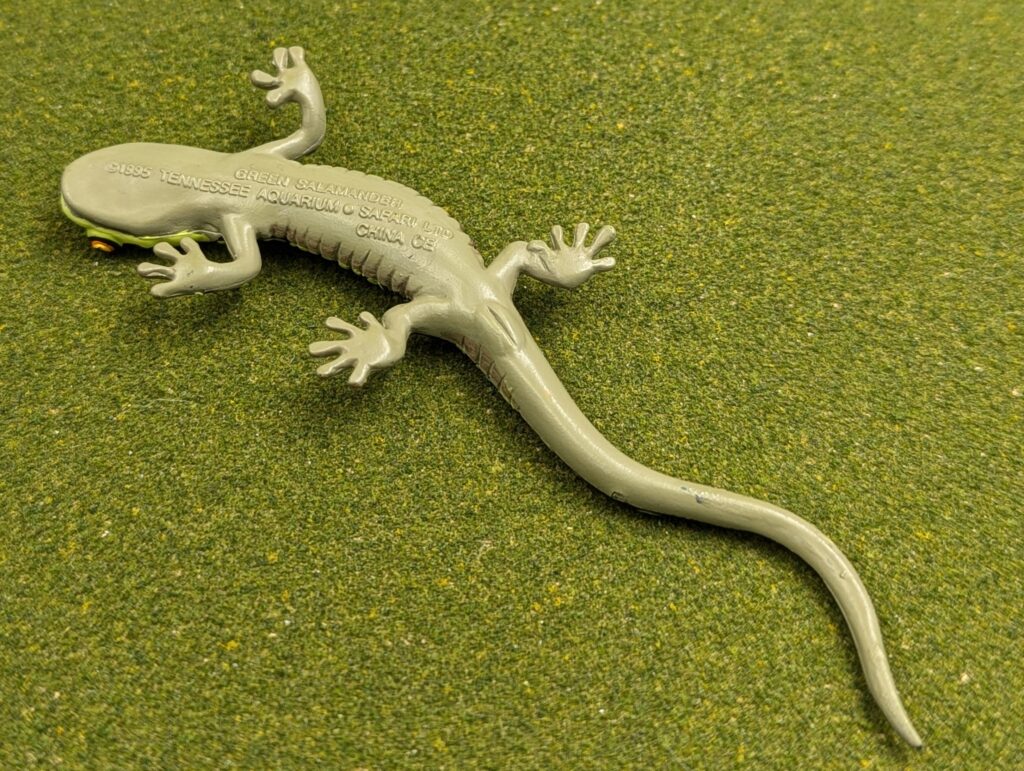
In terms of proportion, the figure nails the appearance. It is just under 13cm long, giving a 1:1 scale (this scaling is true for the entire series). Again, at that size, no particular sex can be differentiated. The body is reasonably dorsoventrally flat (as opposed to more tubular) and positioned in an active sinuous series of curves. The tail is appropriately long and slender, but gives no indication of prehensility (not sure how it would–these are not wired figures, which is good). The feet are all planted flatly, with only the deepest part of the belly resting on the ground as well; the tail and head are raised. The toes are not pointed, but instead seem to flare a little at the tips. I would have thought they were rounded, but based on photos, it appears that this is what is meant by ‘squared’, so this is also correct.
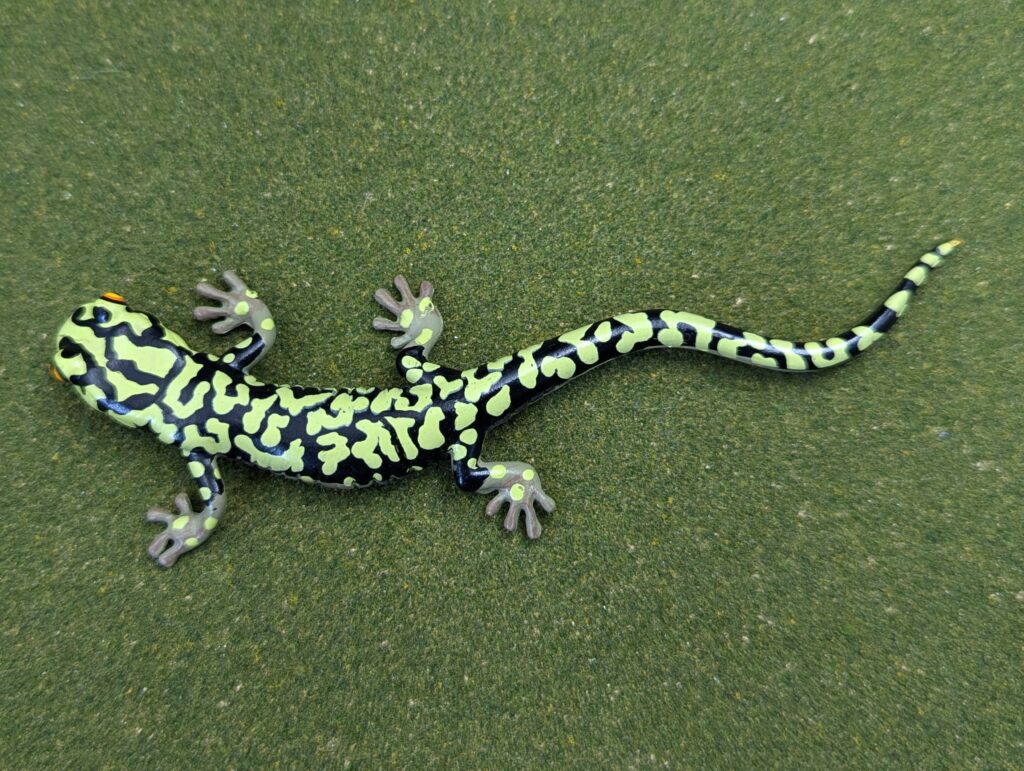
In short, an amazing figure of an interesting little animal. There is a reason that this series is highly sought after and individuals command high prices when they are available. Again, this will be a refrain for the whole series, but Safari went above and beyond for these models–they could seriously be used in museum dioramas as-is and would match the best models available. Incredible models, I look forward to reviewing them all! As it is, to my, knowledge this is the only definite model of a green salamander available, so it’s extra special.

Disclaimer: links to Ebay and Amazon on the AnimalToyBlog are affiliate links, so we make a small commission if you use them. Thanks for supporting us!



